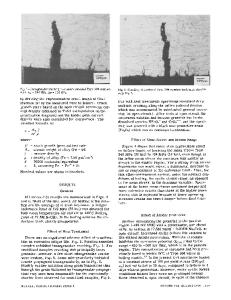Localized Corrosion and Stress Corrosion Cracking Behavior of AA7003 in a 3.5 wt% NaCl Aqueous Solution
- PDF / 2,717,217 Bytes
- 10 Pages / 595.276 x 841.89 pts (A4) Page_size
- 68 Downloads / 342 Views
986 DOI
https: //doi. org/10.1007/s11595-020-2346-x
Localized Corrosion and Stress Corrosion Cracking Behavior of AA7003 in a 3.5 wt% NaCl Aqueous Solution QI Xing1,2,3, SUN Bin1,2,3, CHEN Xiaoming4, SONG Renguo1,2,3*
(1. School of Materials Science and Engineering, Changzhou University, Changzhou 213164, China; 2. Jiangsu Key Laboratory of Materials Surface Science and Technology, Changzhou University, Changzhou 213164, China; 3. Jiangsu Collaborative Innovation Center of Photovolatic Science and Engineering, Changzhou University, Changzhou 213164, China; 4. Key Laboratory of Research on Hydraulic and Hydro-Power Equipment Surface Engineering Technology of Zhejiang Province, Hangzhou 310012, China)
Abstract: The microstructure, localized corrosion (LC) and stress corrosion cracking (SCC) behavior of 7003 aluminum alloy (AA7003) under various aging treatments (peak aging (PA), double peak aging (DPA), regression and re-aging (RRA) ) were investigated by means of transmission electron microscope (TEM), scanning electron microscopy (SEM), electrochemical impendence spectroscopy (EIS) and slow strain rate tensile test. The results of TEM showed a discontinuous distribution of grain boundary precipitates of AA7003 under DPA and RRA treatments, which is beneficial for increasing the resistance of LC and SCC. Meanwhile, LC was found initiating firstly on intermetallics which caused the dissolution of surrounding matrix, then pitting holes were formed and developed into matrix. In addition, the SCC process of AA7003 could be divided into two stages, i e, initial pre-cracking and breeding cracking. The EIS analysis, cross-section morphologies and fracture surfaces of specimens indicated that DPA and RRA treatments significantly decreased the crack growth rate during breeding cracking stage, especially for RRA treatment. Key words: 7003 aluminum alloy; localized corrosion; stress corrosion cracking
1 Introduction 7000 series aluminum alloys have been widely used as structural materials in aeronautical industries due to their attractive and comprehensive properties, such as low density, high strength, ductility, toughness and resistance to fatigue [1-4]. However, 7000 series aluminum alloys are susceptible to localized corrosion (LC) and stress corrosion cracking (SCC) in chloride environment, which is the cause of premature failures in various accidents[4,5]. Therefore, it is important to make clear the mechanism of SCC of 7000 series aluminum alloys in order to find measures to avoid unforeseen failures in various strategical industries when these alloys are used[6,7]. Recently, researches on the corrosion behavior of aluminum alloys indicate that for 7000 series aluminum alloys, the corrosion © Wuhan University of Technology and Springer-Verlag GmbH Germany, Part of Springer Nature 2020 (Received: Apr. 29, 2019; Accepted: May 18, 2020) QI Xing (祁星): Ph D student; E-mail: [email protected] *Corresponding author: SONG Renguo (宋仁国): Prof.; Ph D; E-mail: [email protected] Funded by National Natural Science Foundatio
Data Loading...











